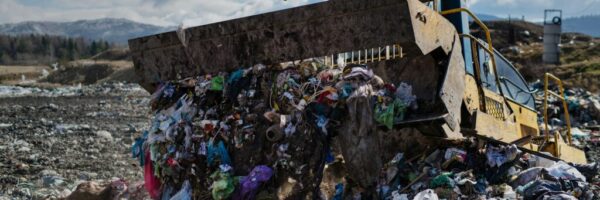
Plastic pollution could more than double by 2040, report finds
Failure to address a worldwide plastic pollution crisis could trigger a surge in greenhouse gas emissions and human health problems tied to the industry, according to a new report.

Citing “serious ethical concerns,” journal retracts key Monsanto Roundup safety study
The journal Regulatory Toxicology and Pharmacology has formally retracted a sweeping scientific paper published in the year 2000 that became a key defense for Monsanto’s claim that Roundup herbicide and its active ingredient glyphosate don’t cause cancer.

Trump administration sides with Bayer in seeking Supreme Court ruling on Roundup fight
Bayer, the beleaguered maker of Roundup herbicide, has garnered the support of the US Department of Justice in its court battle to turn back a tide of litigation brought by people claiming the company failed to warn them of cancer risks associated with the weed killers.

Common pesticides and plastic chemicals stifle healthy gut bacteria
More than a hundred chemicals in pesticides, plastics and other products that people are routinely exposed to stifle the growth of health-promoting gut bacteria, according to a new study.

US landfills emit nearly a ton of airborne PFAS a year, study finds
US municipal landfills leak roughly 1,800 pounds of PFAS into the air annually — evidence that the country’s garbage dumps are a persistent source of airborne “forever chemicals,” according to a new nationwide study.

Microplastics drive plaque buildup in arteries of male mice, study suggests
Exposure to tiny plastic particles that litter the environment may speed plaque buildup in the arteries of male mice, a condition that leads to heart disease, according to a new study.

EPA sees “greater uncertainty” with paraquat risk factor, seeks more data
New data is adding to regulatory concerns about the potential human health impacts of the weed killer paraquat, leading the US Environmental Protection Agency (EPA) to seek more information from manufacturers of the pesticide.

California farmland doused with 2.5 million pounds of PFAS pesticides each year, analysis finds
Farm fields in California, the largest US agricultural state, are sprayed each year with an average of 2.5 million pounds of pesticides containing toxic PFAS, potentially exposing millions of people to the chemicals through contaminated food, soil and drinking water, according to a new analysis of state regulatory data.

Baby food fears: Are pesticides and other contaminants posing threats to children?
From botulism spores in infant formula to arsenic and insecticides in baby food, concerns are climbing over contamination in foods marketed as essential nutrition for young children.

Tyson agrees to settlement over climate-smart beef claims
Tyson Foods will stop asserting it is pursuing production of “climate-smart” beef and working to reduce harmful greenhouse gas emissions as part of a legal settlement of a lawsuit that challenged the veracity of the company’s environmental claims.